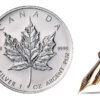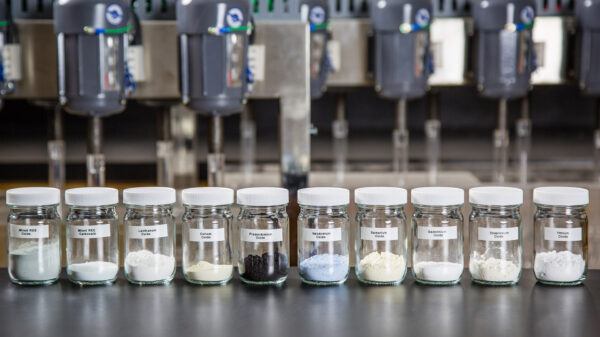Gold remains one of the best-performing assets in 2025, rising 26 per cent year-to-date in U.S. dollar terms.
According to the World Gold Council’s mid-year outlook, released on Tuesday, this surge reflects several converging forces: a weakening dollar, resilient central bank demand, and rising geopolitical instability. Additionally, investors continue to flock to gold as a hedge against macroeconomic uncertainty.
The report notes that recent consolidation may be setting the stage for another leg higher. Technical indicators point to a stable support zone, while inflows from institutional investors add further momentum. Meanwhile, central banks are expected to remain net buyers throughout the rest of the year, although volumes may not reach 2022 levels.
Gold’s resilience in 2025 reflects an unusual convergence of inflationary and geopolitical risks.
The U.S. dollar has struggled under the weight of lower real yields and mixed economic data. At the same time, central banks have kept interest rates range bound, contributing to an environment of financial uncertainty. Further, heightened tensions across Eastern Europe, the Middle East, and the South China Sea continue to boost safe-haven demand.
Spot gold traded at USD$3,346.20 per ounce on Tuesday, edging up 0.1 per cent. Analysts believe prices could rise an additional 0 to 5 per cent in the second half of the year if current macro conditions persist. However, the World Gold Council emphasizes that gold’s path depends on whether markets align with or diverge from current expectations.
Read more: NevGold closes its Nutmeg Mountain acquisition with Goldmining for $3 million
Read more: NevGold’s long intervals of antimony & gold mineralization turn heads
Global conflict resolution could retract safe-haven demand
If macro conditions worsen, especially with stagflation or an economic downturn, gold could rise 10 to 15 per cent from current levels. In that scenario, capital would likely flow into gold at an accelerated pace. Institutional investors may increase allocations, and central banks could respond with renewed buying. Accordingly, gold would maintain its role as a portfolio hedge.
Conversely, if there is widespread conflict resolution or a sharp improvement in global trade, gold could experience a correction. The World Gold Council outlines a possible 12 to 17 per cent pullback in such a scenario. Such a downturn would likely reduce safe-haven demand and increase investor interest in riskier assets. Meanwhile, elevated gold prices could also constrain consumer demand and encourage more recycling.
Still, most analysts do not anticipate a sharp reversal. The broader consensus points to a “seesaw” second half. Falling interest rates, persistent global tensions, and volatile markets should continue to support gold’s appeal. Additionally, as real yields decline, non-yielding assets like gold typically benefit. Central banks, particularly in emerging markets, appear committed to diversifying away from the U.S. dollar.
Further, while retail investment demand may ease, institutional participation is gaining strength. New buyer categories like Chinese insurers and pension funds are reportedly entering the market. These long-term investors tend to smooth out price volatility and lend support during pullbacks.
Gold’s robust outlook into the second half of 2025 signals strategic benefits and challenges for gold producers, jewellers, and downstream industries.
Read more: Promising antimony find in Nevada strongly positions NevGold Corp in minerals race
Read more: NevGold’s long intervals of antimony & gold mineralization turn heads
Jewellers and other industries face mixed outcomes
For producers like NevGold Corp (CVE: NAU) (OTCMKTS: NAUFF) (FRA: 5E50), the potential for modest to strong gold price gains bodes well. NevGold is advancing several high-grade projects, including Limo Butte and Nutmeg Mountain in Nevada and Idaho.
The WGC’s expectation that gold may gain an additional few per cent supports producers’ incentives to ramp up exploration and development plans. NevGold’s recent drill results, including 9.7 g/t gold-equivalent over 11.6 m, position it to capitalise if prices strengthen further . However, volatile prices imply that capital discipline is critical. Sustaining project funding and managing operating costs amid potential price dips will be essential.
Furthermore, jewellers and other downstream industries face mixed outcomes. Higher gold prices raise input costs, squeezing margins. Many jewellers will likely pass costs onto consumers, potentially curbing retail demand. Yet gold’s “safe-haven” status may also enhance its allure, especially for high-end, investment-grade jewellery.
Meanwhile, refiners and recyclers may benefit from increased recycling activity. The WGC suggests elevated prices drive more recycling . That feeds raw material back into the supply chain, benefiting refineries.
Overall, stability or upside in gold prices supports upstream investment, although cost control remains key for juniors like NevGold. For jewellers, the focus shifts to managing premiums and maintaining demand. Refiners and recyclers may gain from steady supply inflows.
.
NevGold Corp is a sponsor of Mugglehead news coverage
.














